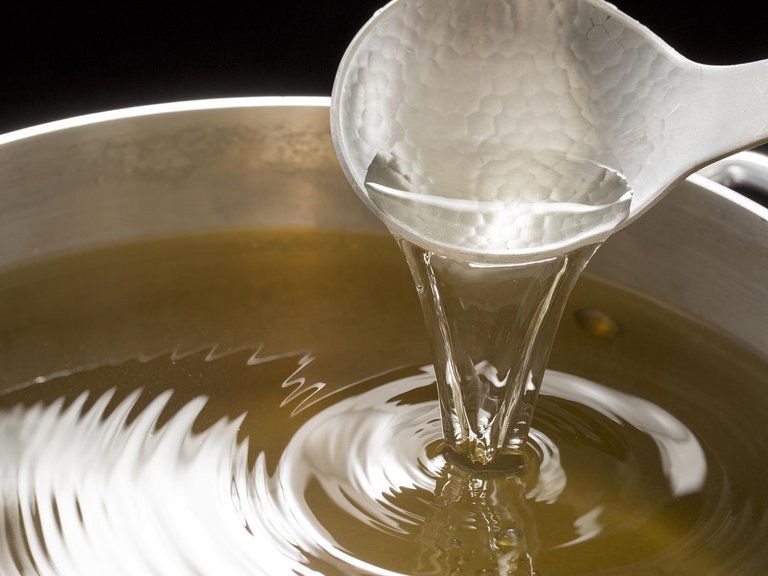Understanding and realizing dashi is one of the fundamentals of Japanese cuisine. This is an element found in all traditional Japanese cuisine. It is a basic sauce that is easy to make, which can be customized to your preferences. Preparing your dashi is also an alternative to industrial dashis that can prove to be more expensive than home-made confectionery.

Make his Dashi at home
Many Japanese meals consist of a broth base called dashi. Used in the same way as our European broth of poultry, beef or vegetables, dashi serves as a base for dishes, enhancing their taste and flavoring Japanese cuisine. It is the famous "KUB OR" Japanese. The dashi is obtained thanks to the kombu seaweed broth and dried bonito flakes (katsuobushi), sometimes specific dried mushrooms (shiitake) and even niboshis (small dried fish) which is the result.
Dashi is used as a base for miso soup and is also used in making nishimé (simmered vegetables) and dashimaki-tamago.
Despite the fact that dashi is of Japanese origin, there is less and less fresh dashi, even in Japan. It is presented today in the form of liquid or granular substitutes hence my intention to present you the recipe of this broth that will accompany most Ramens recipes of this blog.

The main dashis:
- Ichiban dashi: broth obtained thanks to dried bonito and kombu seaweed. The aroma of this broth is delicate and its taste is very fine. It is used for clear soups most of the time.
- Niban dashi: broth considered as a variant of Ichiban dashi because it consists of the remains of the latter, and it reveals much stronger, intense and pronounced. We can also note some notes of bitterness. It is sometimes the cooking background of some traditional dishes.
- Shojin dashi: dried shiitake bouillon (mushrooms) and kombu. It is also called vegetarian Dashi.
These three dashis are usually used for vegetable dishes. The taste is generally more suitable, balanced than with meat or fish. - Konbu dashi: Only made with kombu seaweed, this broth is suitable for vegetable dishes or Japanese rice.
- Niboshi dashi: Prepared with niboshi (small dried fish), it is a dashi with a very pronounced taste and a bit bitter.
Preparation of Ichiban Dashi:
To make about 1 liter of Ichiban dashi you have to provide:
- A piece of Kombu about 10 cm (about 30 grams). Do not forget to wipe it before use.
- Get about 50 grams of grated dried bonito or flake (easier to find)
- Pour 1.8 liters of water into a Dutch oven. Add the seaweed with the water and heat over medium heat for one hour. Be careful, if the water boils it will give a bad taste to your dashi.
- From the beginning of boiling, remove the konbu and add 10cl of cold water to stop the boiling.
- Then add the flake bonito, reduce the heat and simmer for a minute before removing from heat. Again, the water should not reach boiling, otherwise the bonito would leave an unpleasant taste.
- Then pass the broth through the sieve to extract the bonito flakes.
- Let cool: your dashi is realized you can now make your delicious ramen and make sauces.
You can keep the algae and bonito in order to prepare the niban dashi if you wish.
Preparation of Niban dashi
- Collect the konbu seaweed and the bonito flakes previously used to make Ichiban dashi.
- Bring to boil in half a liter of water, then let it simmer for 10 minutes.
- Filter the result to obtain a more or less strong concentrate.
The name of Second Dashi makes sense here, because it is directly made from the first preparation.
For further :
I propose two videos that I could find on the subject to view the steps of the recipe and to improve on the technique even if this dashi recipe is not very difficult to achieve.
I am also a fan of Japan and the food especially, never been there but now and then I try to cook some dishes at home, but ingredients are a little tough to get here were I live. I also checked out your teriyaki miso recipe.
I hope that there will be more posts about Japanese cuisine 😎
I have already done a lot but yes others will follow ^^ For the ingredients you have to go either specialized store or a hypermarket-style store Carrefour or on the internet